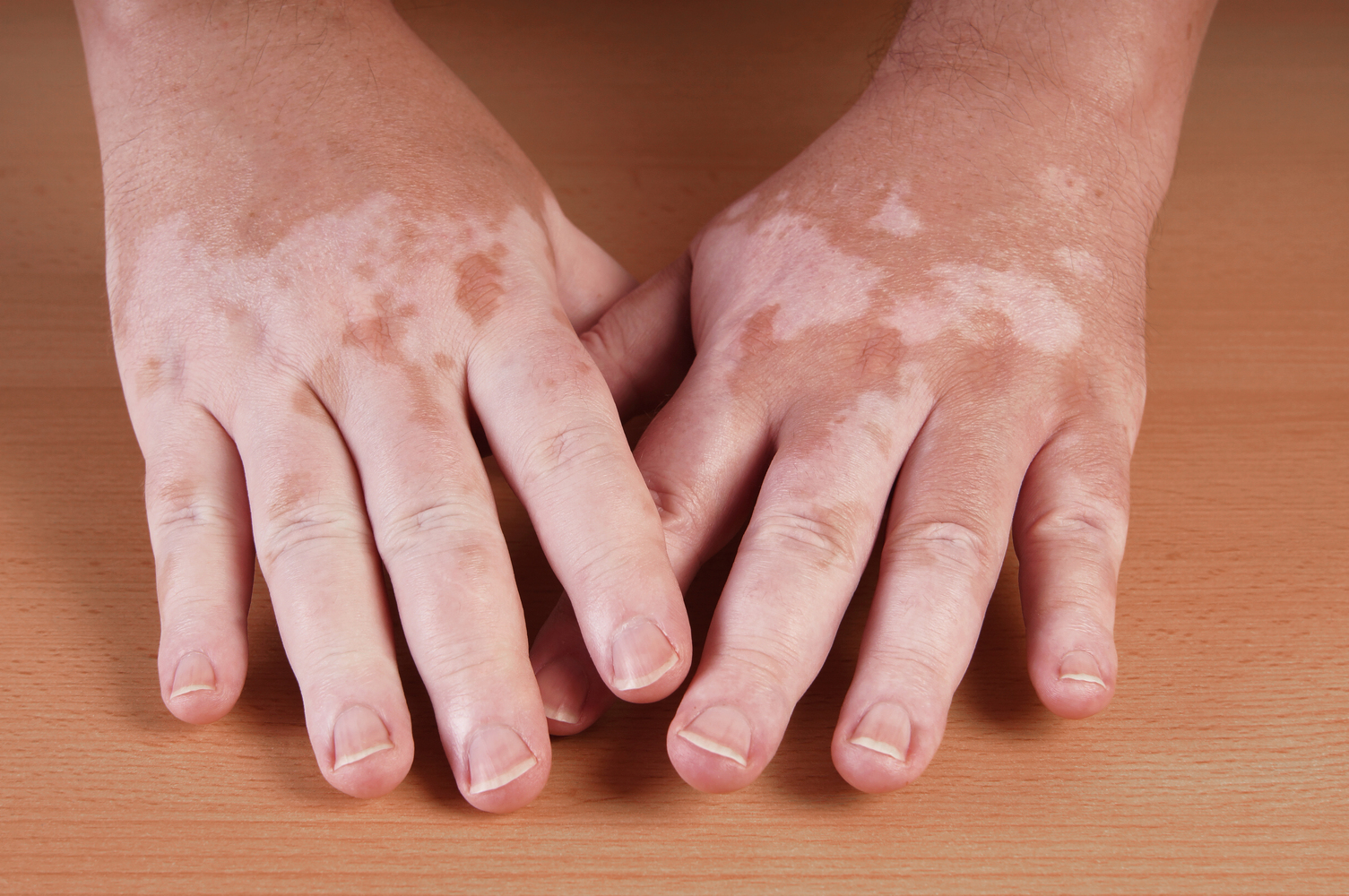
Symptoms of Vitiligo
Vitiligo is a chronic autoimmune disorder that causes people with vitiligo to lose the color of their skin in patches around their body. There are a few vitiligo treatments such as sun protection since those with vitiligo are at increased risk of sunburn, as well as topical steroid creams, and vitamin D supplements. Here are the vitiligo symptoms you should look out for:
1. Patches of discolored skin
The main symptom of vitiligo is the loss of color in the skin, causing the skin to appear in milky white patches around the body. These patches are most commonly seen on the hands, feet, face, and the arms, but they can occur anywhere on the body. The loss of color is caused by the body’s immune system attacking the skin’s melanocytes—a type of cell that produces melanin and gives the skin its color.
2. White or gray hairs
As the body attacks the melanocytes in the skin, it is possible it attacks the melanin production in the hair causing a loss of color in the patients hair as well. This can occur in any hair such as the eyebrows, eyelashes, scalp hair, and more. The hair typically changes from its natural color to white or gray in patches as opposed to randomly throughout the hair. Some people might want to dye their hair back to its original color, however this can actually worsen the vitiligo, so doctors recommend against it.
3. Discolored mucus membranes
Another place the body can lose color is on the mucous membranes. This depigmentation is caused by the immune system attacking the melanin production the same way it does with the skin and hair. This can affect the mouth, nose, or other bodily membranes but is most easily observed in the mouth. Mucosal vitiligo can cause these areas to become light pink or almost white in color.
4. Hearing loss
Since the inner ear contains melanocytes, it can be affected by vitiligo as well. However, when these melanocytes get attacked it can cause damage and inflammation in the ear that can result in partial hearing loss. It is estimated that between 12% and 38% of those with vitiligo are affected by hearing loss, but it is not always severe so it can be hard to tell. If you suspect you have hearing loss as a result of vitiligo then consult a doctor for a hearing exam.
5. Uveitis
It has been proven that those who suffer from vitiligo have increased cases of uveitis, an inflammation inside of the eye. It is estimated that anywhere from 5% up to 19% of patients with vitiligo will have uveitis. Uveitis can cause redness and irritation in the eye as well as light sensitivity and even some vision loss. This is caused by the immune system attacking the melanocytes in the retina.




